- Bonsai is a Japanese art. This term bonsai may be used to refer the art of miniaturizing trees but Usually it is more than an art form. The word “Bon-sai” is a Japanese word which, means “planted in a container”. This art form is derived from an ancient Chinese horticultural Practice. Then the art is redeveloped under the influence of Japanese Zen Buddhism.
History And Origin Of Bonsai
Although the word ‘Bon-sai’ is Japanese, the art is mainly originated in the Chinese empire. By the year 700 AD the Chinese had started the art of ‘pun-tsai’ in order to grow dwarf trees in containers using various techniques. Actually only the elite society practiced pun-tsai with their native-collected specimens and those trees where spread throughout China as a very luxurious gifts. During the Kamakura period, the art of growing trees in containers was introduced into Japan. The Japanese developed Bonsai with the influence of Zen Buddhism.In that time well-known techniques, styles and tools were developed in Japan from Chinese originals. Although the art is known to a limited extent outside Asia for three centuries, Bonsai has truly been spread outside its homelands very recently.
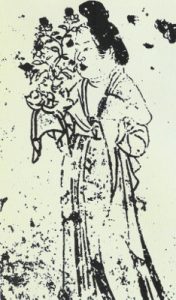
Sources of Bonsai Materials
In the very early time bonsai is created with a specimen of source material. This can be a seedlings, cutting or small sized tree of a species that is suitable for bonsai development. Bonsai can also be created from any type of perennial woody-stem trees that have true branches and can be cultivated to have miniaturized size through suitable pot confinement with root pruning.
Some species have much popularity as bonsai material because they have the characteristics , such as small leaves or needles, that can make them appropriate for bonsai development. The source specimen is shaped to have small size and to meet the aesthetic standards of bonsai.
Best Trees For Bonsai
-
Japanese Maple tree
-
Bodhi tree (Ficus religiosa)
-
Cotoneaster horizontales
-
Baobab tree
-
Common Beech tree (Facus sylvatica)
-
Boxwood tree
-
Pomegranate tree
-
Juniper tree
-
Ficus retusa
-
Ficus benjamina
-
Jade Tree (Crassula ovata )
-
Chinese elm tree
-
Bougainvillea
-
Dwarf schefflera (Schefflera arboricola)
-
Indian banyan (Ficus benghalensis)
-
Adenium tree
-
Pine tree
-
Azalea tree
-
Fukien tea (Carmona retusa)
-
Crape maple tree
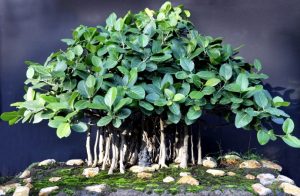

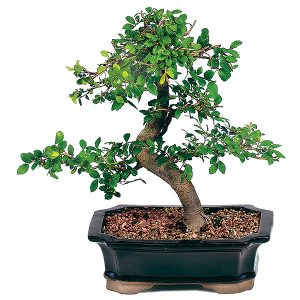
Bonsai Techniques
By following different techniques a bonsai tree can be created. Actually these miniaturized trees can be cultivated from the seedlings of the species or can be cultivated by choosing the right bonsai tree or by re-potting it. These techniques are given below :
-
The ways of choosing the Right Bonsai Tree :
1.Selection of the suitable species for the respective climate :
Many woody perennials and some tropical plants can be cultivated into Bonsai trees, but every species will not be appropriate for an unique location. In the time of selection of a species, it’s very important to have idea on the climate that the tree will be grown in. Some trees can die in freezing weather, while others actually require the temperature so that they can enter a dormant state and prepare for the spring. Before starting a Bonsai tree, we have to make sure the species have chosen can live in the particular area – especially if the plan is to cultivate an outdoor tree. Particularly a beginner-friendly variety of Bonsai tree is the juniper. In addition, juniper trees are easy to cultivate – because of their well response to pruning and other cultivating efforts and also they are evergreens, never lose their leaves. Other conifers are commonly cultivated as Bonsai trees including many varieties of pines, spruces, and cedars .
2.Taking decision on having an indoor or outdoor trees
Generally, indoor environments are much drier and they receive less amount of light than outdoor environments, so it is necessary to take the decision of choosing trees with lower light and moisture requirements. Some of the most common varieties of bonsai tree are listed below by their appropriateness for being either indoor or outdoor environments.
Indoor: Ficus, Serissa, Gardenia, Camellia, Kingsville Boxwood etc.
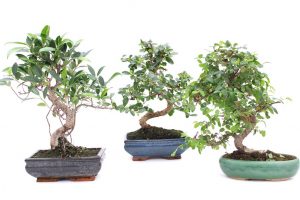
Outdoor: Juniper, Cypress, Cedar, Maple, Beech, Ginkgo, Larch, Elm etc.
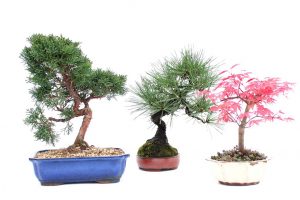
3.Selecting the size of bonsai :
Bonsai trees can be cultivated in a wide variety of sizes.Depending on the tree species well-grown trees can be as small as 6 inches (15.2 cm) tall to as large 3 feet (0.9 m) tall. Larger bonsai trees require more water, soil, and sunlight and other relative facilities. In the time of taking decision on the sizes of bonsai tree only a few things have to be considered :
- The size of the container using
- The space that is available at the location
- The availability of sunlight
- The amount of care will be able to invest in the tree (larger trees take long time to prune)
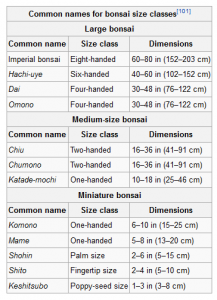
Different sizes of bonsai tree according to Japanese classification
4.Visualization of the finished product while selecting a plant :
In the time of choosing a plant, we have to look for a vibrant, healthy green leaf or needle color to make sure that the plant is healthy. Part of the fun of growing a Bonsai tree is gently pruning and shaping it until it’s exactly how we want it . Many bonsai are made to look as if they were an adult tree, including proportion, shape, and foliage. If we choose to grow the Bonsai tree from a seed, we’ll have the ability to control the tree’s growth in nearly every stage of its development. However, it can take up to 5 years (depending on the species of the tree) for a Bonsai tree to grow from a seed into a full-grown tree. Another option we have is to grow the Bonsai tree from a cutting. Cuttings are branches cut from growing trees and transplanted to new soil to start a separate plant. Cuttings are a good compromise choice – they don’t take as long time to grow as seeds, but they still offer a good deal of control over the tree’s growth.
5.Selecting a suitable pot for the bonsai tree :
The most important feature of Bonsai trees is that they are planted in pots that restrict their growth. The most important factor in deciding which pot to use and to make sure that the pot is large enough to allow enough soil to cover the roots of the plant. When we waters tree, it absorbs moisture from the soil through its roots.To prevent root rot, we have to ensure that the pot has one or more drainage holes on the bottom. The pot has to be big enough for the tree’s roots, but not much bigger. Some prefer to grow their Bonsai trees in plain, practical containers, then transfer them in suitable pot.

-
The ways of potting grown bonsai trees :
1.Preparing the bonsai tree :
If we’ve just bought a Bonsai from the store and it came in an unappealing plastic container or we’ve been growing our own Bonsai tree and finally want to put it in the perfect pot, we’ll need to prepare it before transplanting it. At first, we have to ensure the tree has been pruned to the shape we desire. If we’d like the tree to grow a certain way after re-potting it, we have to wrap sturdy wire around the tree or branch to gently direct its growth. Knowing the trees with seasonal life cycles are best transplanted in the spring. Rising temperatures in the spring cause many plants to enter a state of increased growth, which means they’ll recover from pruning and root trimming faster.
2.Removing the tree and cleaning the roots :
After removing the plant from its current pot, carefully we have to make sure not to break its main stem. Most of the roots will be cut before the plant is re-potted into the Bonsai pot. However, to have a clear view of the roots, it is necessary to brush away any of the dirt stuck to them. Cleaning the roots, brushing away any clumps of dirt is very important. Root rakes, chopsticks, tweezers, and similar tools are very helpful for this process. The roots don’t have to be spotless ,just we have to clean enough.
3.Pruning the roots:
If their growth is not adequately controlled, Bonsai trees can easily outgrow their containers. To ensure the bonsai tree remains manageable and tidy, it has to prune its roots properly. It is cut any large, thick roots and any upward-facing roots, leaving a network of long, slender roots that will sit near the surface of the soil.
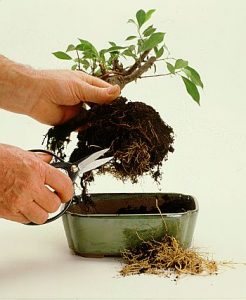
4.Preparing a suitable pot :
Before placing the tree in the pot, we have to ensure about it’s fresh base, new soil to sit on that gives it the desired height. At the bottom of the empty pot, a layer of coarse-grain soil is added as a base. Then a looser growing medium or soil is added above this. Then a soil or medium is used that drains well and regular garden soil can hold too much water and may drown the roots. If the plant comes with a recommended soil texture, it will do best in that kind of soil.
5.Potting the bonsai tree :
After adding fine, well-draining soil or growing medium to the pot, we have to make sure to cover the tree’s root system. Even we may add a final layer of moss or gravel. In addition to being aesthetically pleasing, this can help hold the tree in it’s fixed place. If the tree isn’t staying upright in the new pot, a heavy gauge wire is run from the bottom of the pot through the drainage holes on the bottom of the pot. The wire is tied around the root system in order to hold the plant in it’s place.
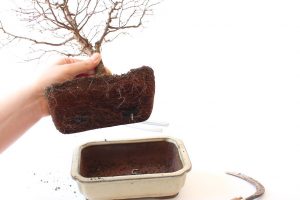
6.Caring for the new bonsai tree :
After re-potting the tree is left in a semi-shaded area for 2-3 weeks and protected from the wind or direct sunlight. We can’t use fertilizer until the roots have re-established themselves. Deciduous trees with yearly life cycles experience a period of intensified growth in the spring. Because of this, it is best to re-pot deciduous trees in the spring time when their winter dormancy has ended. If the deciduous tree is an indoor plant, after allowing it to take root following a re-potting process, we may move it outside where the rising temperature and increased sunlight can trigger its natural growth spurt.
-
The ways of Growing A Bonsai Tree from Seeds :
1.Obtaining perfect seeds :
Growing a bonsai tree from a single seed is an extremely long and slow process. Depending on the type of tree grow, it can take up to 4-5 years for the tree’s trunk to become just 1 inch (2.5 cm) in diameter. Seeds of desired species of tree can be bought from a gardening store or we can gather them in nature.Many deciduous trees, like oaks, beeches, that release seeds from the tree on a yearly basis.
2.Allowing the seed to germinate :
Seeds from trees are usually biologically coded to germinate only after they experience the cold temperatures of winter and the gradually increasing warmth of spring. In these cases, it’s necessary to keep the seeds in cold temperature or to simulate them in refrigerator.If we live in a temperate environment with a defined seasons, we can just bury the tree’s seed in a small pot with soil keeping it outside throughout the winter and into the spring.
3.Introducing seedlings to a seed tray or pot :
When the seedlings have begun to sprout, we have to be ready to begin nurturing them in a small soil-filled container of your choosing. Over time, we try to keep the soil around the seed damp, but not sopping wet or mud-like, as this can cause the plant to rot.Usually we don’t use fertilizer until about 5 or 6 weeks after the plants have established themselves in their new containers.
4.Keeping the seedlings in an area of suitable temperature :
As the seeds continue to grow, it is very important not to expose them directly to cold temperatures. If we live in an area with a warm spring, we may cautiously introduce the new seedlings to a warm but sheltered spot outdoors, ensuring the trees aren’t exposed to harsh wind or constant sunlight, provided the species of tree is one that can naturally survive in ours geographical area. If we’re growing tropical plants or germinating the seeds out of season, however, it may be found that it’s better to keep the plants indoors or in a greenhouse where it’s warmer.
5.Caring for the young seedlings :
It is carried on with the regimen of watering and cautious sun exposure as the seedling grows. Deciduous trees will sprout two small leaves called cotyledons directly from the seed before developing true leaves and continuing to grow.
Caring for A Bonsai Tree
-
Watering
In order to have healthy and strong bonsai trees it must be watered properly. The bonsai tree should be watered by placing the pot in a bowl of water. When the soil has absorbed water, bubbles will stop forming in the water, and the tree should be removed. This should be done per week, or as needed. Bonsai soil should never be soaking wet, but it should not be dry.
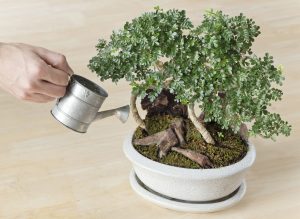
-
Proper Soil
Different species of bonsai trees require different types of soil.Some plants will prefer a sandy soil, while others will like loamy soil or silt soil. Well draining soil is always preferably used.
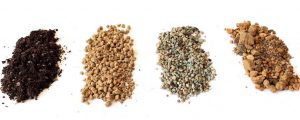
-
Proper Pot
The pot must have the proper size otherwise the bonsai tree will not be able to grow well. Generally the width of the pot should be 1/3 of the height of the tree and the depth of the pot should be about the same height as the trunk of the tree. If the tree is growing well ,the tree will need to be repotted to a larger pot annually.
-
Proper Climate
The proper climate is necessary to keep the tree healthy and fresh. In the summer, when the soil dries out quicker, the tree should be placed in a partly shaded area to help the tree retaining moisture. In the winter, the opposite process has to be done .Placcing the tree in a bright and sunny window that can help prevent the tree from staying too wet.
-
Proper Trimming
The trimming of a bonsai plant is very important By this it can grow properly into the desired shape. Leaves and branches can be trimmed off and are should be taken while trimming.If the wrong leaf or branch is trimmed, the shape of the tree can be changed severely. Sharp scissors have to be used to avoid causing damage to the tree. Sharp tools help make a clean cut and leave the tree healthy and fresh.
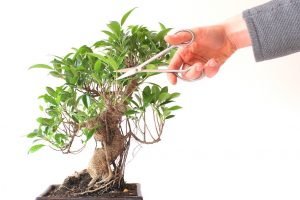
- Trimming and pruning a bonsai tree
Health Benefits of Growing a Bonsai Tree
- Cultivating bonsai trees is a wonderful hobby and a great stress reliever.
- Bonsai trees usually require proper water, care, trimming, and fertilizing process to be healthy.
- Caring for plant can help develop one’s patience.
- Working with nature, including bonsai trees, can help to become a more peaceful person.
- Indoor plants, including bonsai, can clean and help purify the air in one’s home or office.
- Plants grown indoors can help fight fatigue, coughs, and sore throats.
- Successfully growing and caring for a bonsai tree can leave with a great sense of accomplishment which is very effective for health.
Why bonsai trees are so expensive
Actually the price of bonsai trees varies based on the age of the species. The more old a tree is, the more costlier it becomes. Again if the tree is a rare species, the price shoots up.Then there are 2 varieties of plants available – pre bonsai and bonsai trees. Pre bonsai materials are cheaper but costlier than the nursery plants. Again the rate depends on the thickness of the trunk, the age of the tree and the ramification of the branches etc. Bonsai trees are available from Rs. 2,500/- to Rs 5 lacs and more. Most cheap Bonsai trees are grown in China.The price of Bonsai also depends a lot on how much time is invested in that specific tree.
The price of Bonsai trees depends on several factors, most noteworthy age and design.This factors are:
1.Age and history of the species
2.Design and tapering of the trunk of the tree
3.Pot type and tree species type
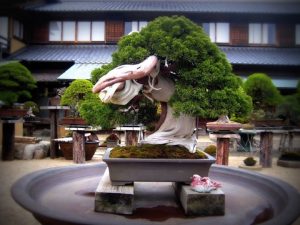
In this centuries the most expensive Bonsai tree is old Pine sold for 1.3 million dollar at the International Bonsai Convention in Takamatsu, Japan.It is a remarkable bonsai tree which is well known for it’s high age; The tree is reported to be over 800 years old.
Written by
Tubaia Zannat Juthi, B.S. (Hons), Department of Botany, University of Dhaka
Best safe and secure cloud storage with password protection
Get Envato Elements, Prime Video, Hotstar and Netflix For Free
 Plantlet The Blogging Platform of Department of Botany, University of Dhaka
Plantlet The Blogging Platform of Department of Botany, University of Dhaka
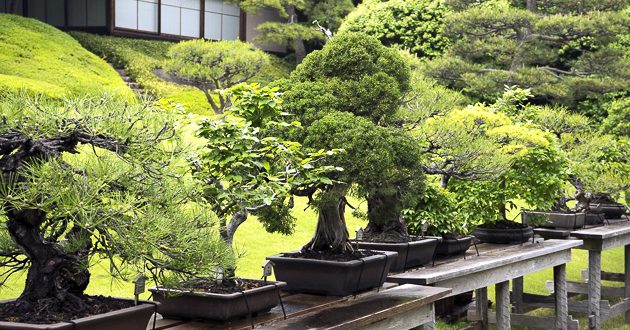

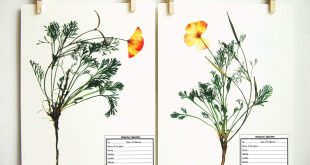

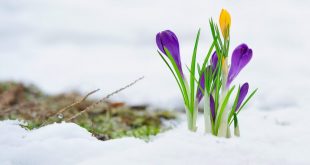
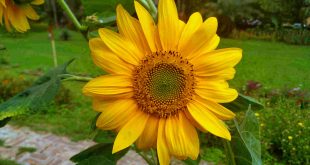
Hi。。。 Ok… I see Leaves design… I have a Jasmine Bonsai… I live in the Beach… Is She an Indoor or outdoor !?!? In Australia zoo it is Fall/ Autumn here… I know She Likes the Sun … She have tiny Jasmine Flowers, and 1 half dry/ green Leaf..m but, She Healthy I general… I never Ever had a Bonsai before,do I Gentle。。。 OK。。。 同样
Hello Vesna,
As an indoor, you have to keep the tree in high light. But during spring and summer, you can grow her in outside. The tree also needs to stay cool with well-circulated air. That’s why you can place it in a partly sunny spot to encourage robust growth.
I was recently gathering notes about Bonsai. This article is a pure 101 for a beginner, undoubtedly. Thank you @Author for sharing such an impactful content.
*What sp. would be the best choice to start with in BD, as a noob?
A lot of info I known from here. Thanks for sharing with us. 🧡